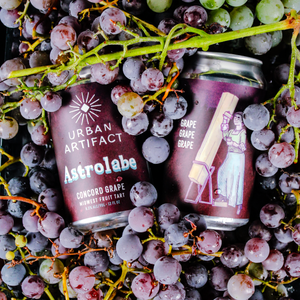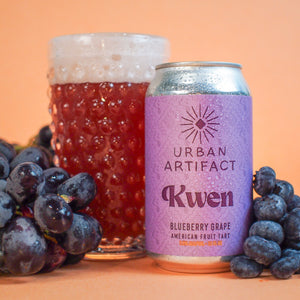There comes a time in every brewer’s life, when they must ask themselves, where do I draw the line on my artisanal brewing creativity? For some, it doesn’t matter at all and there is no line. So long as it is not poison, go ahead and throw it in the beer.
Steak flavored beer? Sure, there is an extract for that. Cookie Dough Ale? Why the hell not, I bet you can find a place that sells that flavor too. For others, the Reinheitsgebot is the only way. Barley, Hops, Water, and Yeast. It has been this way for over 500 years! Except when it hasn’t, like German Hefeweizen Wheat Beers or Traditional Goses or the Berliner Weisse. Others still will only brew organic, insisting upon using more expensive ingredients with the upside of a fully organic brewery and a guarantee of no traces of any “’icides” in their beer. If we keep going down this rabbit hole, we discovers the ramblings of those that speak of biodynamic spontaneous ales, a practice long adopted by a stalwart few in the wine industry. And if you side step the biodynamic crazies (which I find myself one at times), you find those that are loathe to try anything GMO. What does this all mean to you, as the consummate beer drinker? It means that you too have a choice on where you draw your craft beer drinking line; and I am here to show you why I draw that line at artificial flavors and extracts.
First, let me say, I in no way negatively judge a brewers decision to use an extract or flavoring, but I will surely negatively judge your beer if it tastes fake, plasticy, or like cough syrup. It is an easy trap to fall into, the using of flavorings. It is so, so easy. A couple of ounces of relatively cheap highly aromatic liquid and BAM! your whole batch of beer smells like a cinnabon. Most people don’t pay much attention to the more subtle flavors of what they consume, aside from the glaringly obvious ones. But if you take a second and focus on the flavors of that Fruity Pebbles™ beer, you might notice that it has a distinct plastic like finish. That plastic taste is distinctly found in flavorings. It is the same reason most cherry beers that use cherry flavoring taste like cough syrup. That underlying flavor sensation and accompanying thought “something is off here” is purely a byproduct of these flavorings. And it’s gross. But it’s not your fault. You weren’t raised to like real flavor. Candy, fast food, junk food, and soft drinks are laced with varying imitations of the real thing. Many of us spend our whole lives in a flavor lie, one in which we had little to no choice to participate in. Your tongue has been subjugated to “alternative taste facts” since your mother weened you off her teat.
Second, as stated earlier, there is a big reason these flavorings are found almost ubiquitously in American “cuisine”: They are cheap. A couple ounces of blueberry extract and you can flavor 15 gallons of beer for less than $10. To use real fruit, you would need 15 pounds or more for that same volume, which could run you over $30! And that is just the cost for one keg of beer, extrapolate that out over hundreds to thousands of gallons, and you are looking at some serious savings by using extracts. But, and there is a big but (ha), it doesn’t taste or look good. A beer brewed with blueberries shouldn’t taste like blueberry flavored big league chew nor should it be yellow in color.
So why bother with the real deal? It costs more and makes the brewers job more difficult. We could go out and buy ham flavoring, pineapple extract, maraschino cherry juice and whip up a Pineapple Ham beer for Easter Weekend (rum barrel aged ham beer anyone?) but when it comes out tasting like a toddlers kitchen playset, we at Urban Artifact would find it hard to call ourselves craft brewers. At what point, does using industrial derived products take away from your artisanal craft? If we were to make our own pineapple ham beer, it would involve a lot more work, attempting to replicate the savory ham flavors using nori and salt, using whole real pineapples hand cut and caramelized, and a bushel or two of sour cherries. It would cost over twice as much, but that rewarding difference in taste in the glass is what drives us to continue to create and innovate. Sure, our profit margin suffers, but perhaps it shouldn’t always be about making a couple extra cents.
At the end of the day, if you pay attention, you can taste a difference and you can taste that extra effort. We taste it, and we know you can too.
Cheers,
Bret Kollmann Baker
Chief of Brewing Operations







